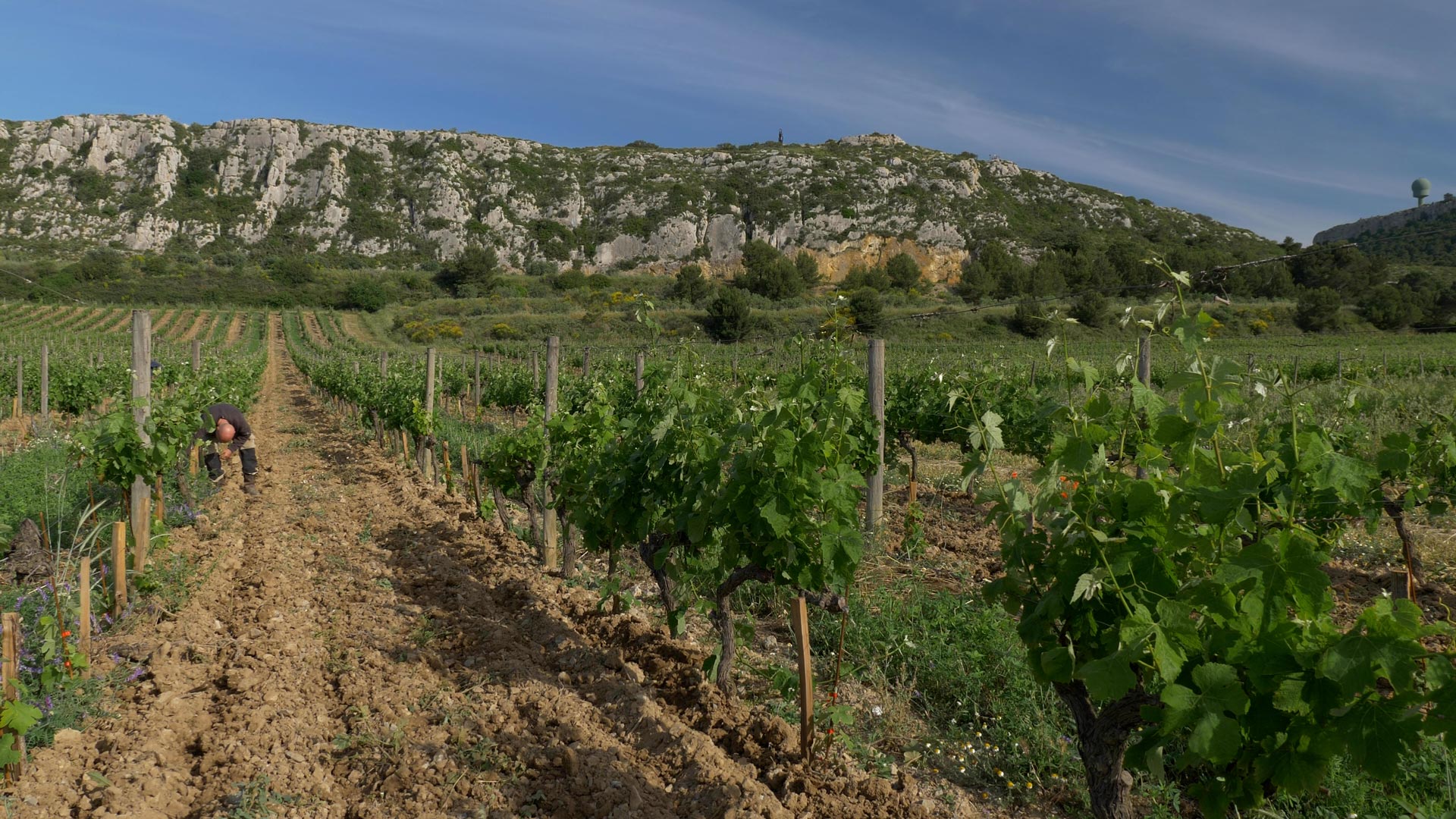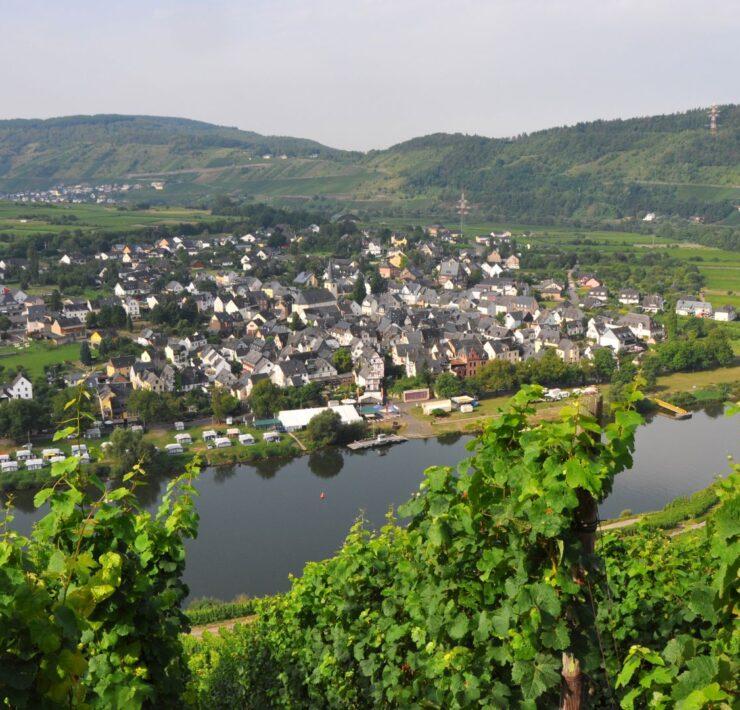There is no limit to how much one can know about famous French wine regions. It’s one of the world’s largest wine-producing countries with a history spanning centuries. Some countries are famous for one or two varietals, like German Riesling or South African Pinotage. But France’s unquestionable dominance continually builds on its reputation of diverse regions, varieties, terroir and styles. Nearly every pocket of France is home to a distinguished region and appellations. Each area is notable for specific varieties that thrive in a particular climate. Let’s discover what makes famous French wine regions discernable and unique.
Alsace

Alsace is in the northeastern corner of France and sits between the Vosges mountains and the German border. Noble white varieties reign supreme here. Riesling has the highest proportion of plantings. Gewürztraminer, Pinot Gris and Muscat follow closely behind. Unlike the majority of France, Alsatian wines specify the grape and not the place of origin.
White wines fall under two significant appellations: Alsace and Alsace Grand Cru. Crémant d’Alsace is a traditional method sparkling wine that includes either Riesling, Pinot Gris, or Chardonnay. Sparkling wines that include Muscat or Gewürztraminer are not permitted under the appellation requirements.
Beaujolais

Often lumped in with Burgundy on a map (though distinctly unique), Beaujolais encompasses the southern portion of the winegrowing region. Situated in central east France, Beaujolais is home to 12 appellations, including Beaujolais AOC, Beaujolais-Villages AOC (of which there are 39) and ten crus. They all have one important grape in common, Gamay!
The notoriously popular Beaujolais Nouveau is a separate category of Beaujolais and Beaujolais-Villages. It’s specifically for early drinking and is released on the third Thursday of November following harvest. This day is marketed worldwide as Beaujolais Nouveau Day.
Bordeaux

Don’t let Bordeaux be intimidating. Under the broadest terms, red Bordeaux is one of two things: a Right Bank, Merlot-dominant wine, or a Left Bank, Cabernet Sauvignon-dominant wine. These two banks of the Gironde estuary from the Atlantic Ocean form the region’s identity.
The two sides of the estuary also have different appellation laws and classification systems. On the left bank, the 1885 classification covers Médoc and Sauternes, while Graves (Pessac-Léognan) has its independent cru classés system. On the right bank, Saint-Émillon separates Grand Cru from Grande Cru Classé and then further separates the top tier of Premier Grand Cru Classé into A (the best) and B categories.
The generic Bordeaux and Bordeaux Supérior appellations are predominantly red blends that sometimes include Cabernet Franc, Petit Verdot and Malbec. Sauvignon Blanc and Semillon make up a small portion of White Bordeaux. Sauternes is Bordeaux’s sweet wine made of late-ripening Semillon, Sauvignon or Muscadelle.
Burgundy

Burgundy, or Bourgogne, has the largest number of appellations of any other French region and is known as one of the most terroir-focused areas. Pinot Noir and Chardonnay are equally important in their varietal roles of Red Burgundy and White Burgundy.
Spanning 100 miles (160 km) from north to south, the quality of a vineyard site determines which level of the appellation hierarchy system it falls into. Bourgogne Rouge and Bourgogne Blanc are the most generic and include wines from anywhere in the region. Next, Communes (or Village) Burgundy accounts for about one-third of the region’s total production. Premier Cru is the next level, of which there are 600 spread across Côte d’Or and Côte Chalonnaise. Grand Cru is the top tier, of which there are only 33, which account for little more than 1% of all production.
Champagne

About an hour east of Paris is the incomparable region of Champagne. The birthplace of the traditional winemaking method, or méthode Champenoise, sees the production of Brut, Blanc de Blancs, and Blanc de Noir, among other one-of-a-kind sparkling wines that are both vintage and non-vintage. As the most northerly winemaking region in all of France, temperatures are cool and with the weather sometimes treacherous.
Three grapes grow across five sub-regions to make Champagne: Chardonnay, Pinot Noir, and Pinot Meunier.
Languedoc-Roussillon

The Languedoc and Roussillon are two regions often referred to as one, as they both sit along the Meditteranean Coast in southern France.
Thanks to the area’s warm temperatures, thick-skinned red grapes thrive here, specifically Syrah, Grenache, Carignan, Cinsault and Mourvèdre.
Languedoc is a generic appellation, many wines made there are Vin de Pays d’Oc. Some specific appellations that boast quality red wines include Côtes du Roussillon, Minervous, Fitou, and Corbières.
Loire Valley

Comprising four distinct areas, the Loire Valley straddles both sides of the Loire River in central France – flowing from the Atlantic Ocean to the country’s center. From west to east, the four areas are Nantais, Anjou-Saumur, Touraine, and the Central Vineyards, including the prestigious Sancerre and Pouilly-Fumé appellations.
White varieties run the show in the Loire. Melon Blanc (or Muscadet) is dominant in Nantais, while Chenin Blanc and Sauvignon Blanc are more prominent throughout the rest of the region. Styles range from dry to sweet, oaked and unoaked, in addition to traditional method sparkling wine. Cabernet Franc is the leading red variety, accounting for 30% of Rosé de Loire.
Provence

Stats from vinsdeprovence.com boast 156 million AOC bottles produced in 2016, accounting for 42% of rosé production across France and 6% worldwide. Provence Rosé is famous for its pristine color, refreshing fruit flavors and crisp acidity. Producers often use a blend of red grapes ranging from Cabernet Sauvignon and Syrah to indigenous varieties such as Cinsault and Mourvèdre.
Provence sits in the southeast corner of France and has nine appellations with AOC status. Côtes de Provence is the largest, followed by Coteaux d’Aix-en-Provence and Coteaux Varois en Provence. Of the remaining six AOCs, Bandol holds the most recognition stateside, producing full-bodied red wines with powerful tannins.
Rhône Valley

Just north of Provence is the southernmost part of the Rhône Valley. Split into northern and southern sections, this area is where you’ll find recognizable and historical names such as Châteauneuf-du-Pape and Hermitage.
Although white blends exist (comprised of Marsanne, Roussanne or Viognier), the Rhône Valley is more famous for its reds. The Southern Rhône is famous for GSM blends (Grenache-Syrah-Mourvèdre). The Northern Rhône showcases varietal Syrah that is earthy and smoky with black fruit characteristics and floral aromas.
Côtes du Rhône AOC is the general appellation and accounts for about half of the valley’s production. Côtes du Rhône Villages AOC is the next largest segment, while Côtes du Rhône (named) Villages AOC – of which there are 21 – is the third largest. And finally, there are 17 distinctive crus at the top of the pyramid.









